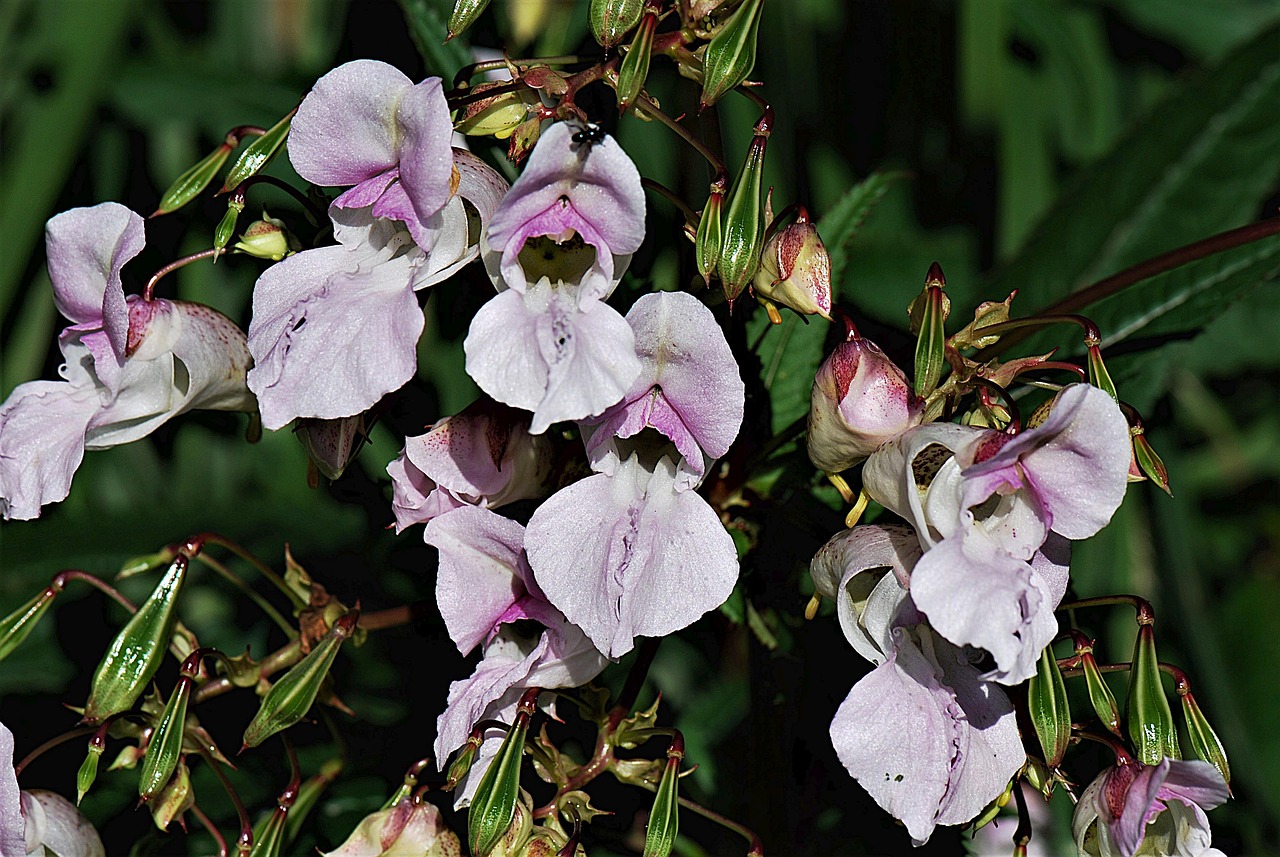Himalayan Balsam
Himalayan Balsam (Impatiens glandulifera) is a highly invasive plant species native to the Himalayan region of Asia. It was introduced to Europe in the 19th century as an ornamental plant and has since spread rapidly across many countries. Similarly to Japanese Knotweed, Himalayan Balsam is considered a serious threat to native ecosystems, as it outcompetes native plant species and disrupts natural habitats.
Himalayan Balsam is characterized by its tall, hollow stems that can grow up to 10 feet (3 meters) in height. Its leaves are serrated and arranged in opposite pairs along the stems. The plant produces attractive pink or purplish flowers with a distinctive helmet-shaped appearance, which makes it a popular ornamental choice but also contributes to its ability to spread seeds over long distances.
The plant is well-adapted to a wide range of environments, particularly moist and riparian areas, where it can form dense stands and dominate the landscape. One of the reasons for its rapid spread is its explosive seed dispersal mechanism. When the seed pods mature, they can burst open with slight pressure, propelling the seeds up to 20 feet (6 meters) away from the parent plant. This helps the species colonize new areas quickly and extensively.

Removal and Control Methods:
Controlling Himalayan Balsam is essential to prevent its spread and protect native biodiversity. Similar to Japanese Knotweed, several methods can be employed for its removal and control:
Manual Removal: Small infestations can be managed by pulling the plants out by hand before they set seeds. This should be done carefully to ensure that the entire root system is removed. Be sure to wear gloves and take precautions to avoid spreading seeds during the removal process.
Cutting: Cutting the plants before they flower and set seeds can help prevent further spread. However, cutting alone is not sufficient for complete eradication, as the plant can regrow from the cut stems. Regular cutting throughout the growing season is necessary.
Mowing: In areas with extensive infestations, mowing the plants before seed set can be effective. Mowing should be repeated several times throughout the growing season to weaken the plants and deplete their energy reserves.
Herbicides: Selective herbicides can be used for large-scale infestations or hard-to-reach areas. Herbicide application should be done by trained professionals to minimize harm to non-target species.
Biocontrol: In some regions, biocontrol agents like insects or pathogens that specifically target Himalayan Balsam have been introduced. These agents can help reduce the plant's population over time.
Preventative Measures: Early detection and rapid response are crucial to preventing the spread of Himalayan Balsam. Monitoring and removing new infestations before they become established can be highly effective.
Restoration: After removing Himalayan Balsam, it's essential to restore the site with native plant species to prevent further invasions.
Do you need help removing Himalayan Balsam?
As with any invasive species, it's important to take action promptly and apply appropriate control methods to minimize the impact of Himalayan Balsam on the environment. Long-term management and cooperation among communities, landowners, and authorities are key to effectively controlling this invasive plant and preserving native ecosystems.
Contact us today if you want help removing Himalayan Balsam from your garden.
